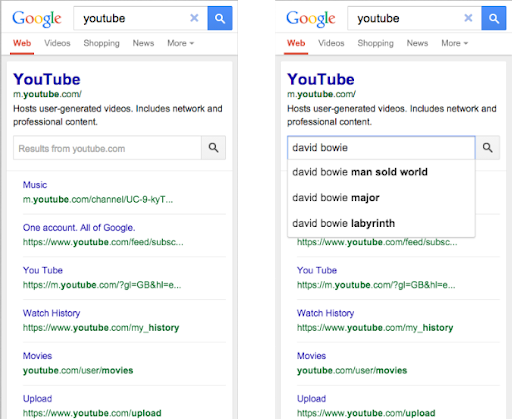Friday, September 05, 2014
Today you'll see a new and improved sitelinks search box. When shown, it will make it easier for users to reach specific content on your site, directly through your own site-search pages.
What's this search box and when does it appear for my site?
When users search for a company by name—for example, "Megadodo Publications" or
"Dunder Mifflin"—they may actually be looking for something specific on that website. In the
past, when our algorithms recognized this, they'd display a larger set of
sitelinks and an additional search box
below that search result, which let users do
site: searches
over the site straight from the results, for example site:example.com hitchhiker guides.
This search box is now more prominent (above the sitelinks), supports Autocomplete, and—if you use the right markup—will send the user directly to your website's own search pages.

How can I mark up my site?
You need to have a working site-specific search engine for your site. If you already have one, you
can let us know by marking up your home page as a
schema.org/WebSite entity with the
potentialAction
property of the
schema.org/SearchAction
markup. You can use JSON-LD, microdata, or RDFa to do this; check out the
full implementation details
in our documentation.
If you implement the markup on your site, users will have the ability to jump directly from the
sitelinks search box to your site's search results page. If we don't find any markup, we'll show
them a Google search results page for the corresponding site: query, as we've done
until now.
As always, if you have questions, you can ask in our Webmaster Help forum.
